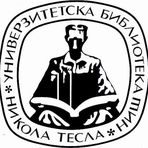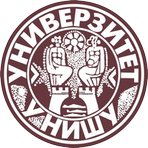Title
Antropometrijski parametri, motoričke sposobnosti i rezultat u sportskom penjanju
Creator
Ignjatović, Milan B. 1985
Copyright date
2017
Object Links
Select license
Autorstvo-Nekomercijalno-Bez prerade 3.0 Srbija (CC BY-NC-ND 3.0)
License description
Dozvoljavate samo preuzimanje i distribuciju dela, ako/dok se pravilno naznačava ime autora, bez ikakvih promena dela i bez prava komercijalnog korišćenja dela. Ova licenca je najstroža CC licenca. Osnovni opis Licence: http://creativecommons.org/licenses/by-nc-nd/3.0/rs/deed.sr_LATN. Sadržaj ugovora u celini: http://creativecommons.org/licenses/by-nc-nd/3.0/rs/legalcode.sr-Latn
Language
Serbian
Cobiss-ID
Theses Type
Doktorska disertacija
description
Datum odbrane: 12.01.2018.
Other responsibilities
mentor
Stanković, Daniel 1976-
predsednik komisije
Raković, Aleksandar 1968-
član komisije
Pantelić, Saša 1975-
član komisije
Savić, Zvezdan M. 1964-
Academic Expertise
Društveno-humanističke nauke
University
Univerzitet u Nišu
Faculty
Fakultet sporta i fizičkog vaspitanja
Group
Katedra za individualne sportove
Alternative title
Antropometric parameters, motor skills and sports climbing results
Publisher
[М. B. Ignjatović]
Format
128 listova
description
Prilog: listovi 115-128;
Biografija autora: list 125;
Bibliografija: listovi 106-114.
description
Physical Education and Sport
Abstract (en)
The basic aims of this research were to determine the relations between anthropometric parameters, flexibility, balance and coordination among male and female sports climbers, as well as to determine the influences of anthropometric parameters, flexibility, balance and coordination on the results in sports climbing among male and female climbers. The research was carried out on a population of male and female senior level sports climbers, including 30 male and 15 female climbers, from 10 clubs in Serbia. The average age of the participants was 29.57± 6.21, average body height 181±6.2 cm, average body mass 73.10±7.25 kg, average body mass index 22.32±1.97, while the average climb difficulty ranged from VIII to VIII+. The female participants were aged 27.33±5.16, average body height 168.33±5.8 cm, average body mass 55.40±6.78 kg, average body mass index 19.51±1.77, while the average climb difficulty was approximately VIII. The research was carried out using 7 measuring instruments for the evaluation of anthropometric parameters, and 15 measuring instruments for the evaluation of motor skills (5 each for the evaluation of flexibility, balance and coordination). The criterion variable represented the most difficult climb during the testing. The data were processed using the Statistica 10.0 program, while the following statistical procedures were carried out: descriptive statistics, discriminant measures, intercorrelations and cross-correlations, the canonical correlation analysis and regression analysis. Based on the obtained results, the following conclusions were reached: there are statistically significant relations between flexibility and coordination among the male lead climbers, while none were determined in the other measured spaces; in addition, there are no statistically significant relations between anthropometric parameters, flexibility, balance and coordination among the female lead climbers; the statistically significant influence of flexibility was determined, but not of anthropometric parameters, balance and coordination on the results in lead climbing among the male climbers; and finally, the statistically significant influence of balance was determined, but not of anthropometric parameters, flexibility, and coordination on the results in lead climbing among the female climbers.
Authors Key words
antropometrijski parametri, fleksibilnost, ravnoteža, koordinacija, sportsko penjanje
Authors Key words
anthropometric parameters, flexibility, balance, coordination, sports climbing
Classification
796.012.1.525(043.3)
Subject
S273
Type
Tekst
Abstract (en)
The basic aims of this research were to determine the relations between anthropometric parameters, flexibility, balance and coordination among male and female sports climbers, as well as to determine the influences of anthropometric parameters, flexibility, balance and coordination on the results in sports climbing among male and female climbers. The research was carried out on a population of male and female senior level sports climbers, including 30 male and 15 female climbers, from 10 clubs in Serbia. The average age of the participants was 29.57± 6.21, average body height 181±6.2 cm, average body mass 73.10±7.25 kg, average body mass index 22.32±1.97, while the average climb difficulty ranged from VIII to VIII+. The female participants were aged 27.33±5.16, average body height 168.33±5.8 cm, average body mass 55.40±6.78 kg, average body mass index 19.51±1.77, while the average climb difficulty was approximately VIII. The research was carried out using 7 measuring instruments for the evaluation of anthropometric parameters, and 15 measuring instruments for the evaluation of motor skills (5 each for the evaluation of flexibility, balance and coordination). The criterion variable represented the most difficult climb during the testing. The data were processed using the Statistica 10.0 program, while the following statistical procedures were carried out: descriptive statistics, discriminant measures, intercorrelations and cross-correlations, the canonical correlation analysis and regression analysis. Based on the obtained results, the following conclusions were reached: there are statistically significant relations between flexibility and coordination among the male lead climbers, while none were determined in the other measured spaces; in addition, there are no statistically significant relations between anthropometric parameters, flexibility, balance and coordination among the female lead climbers; the statistically significant influence of flexibility was determined, but not of anthropometric parameters, balance and coordination on the results in lead climbing among the male climbers; and finally, the statistically significant influence of balance was determined, but not of anthropometric parameters, flexibility, and coordination on the results in lead climbing among the female climbers.
“Data exchange” service offers individual users metadata transfer in several different formats. Citation formats are offered for transfers in texts as for the transfer into internet pages. Citation formats include permanent links that guarantee access to cited sources. For use are commonly structured metadata schemes : Dublin Core xml and ETUB-MS xml, local adaptation of international ETD-MS scheme intended for use in academic documents.


